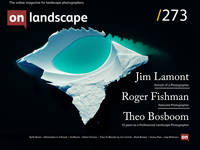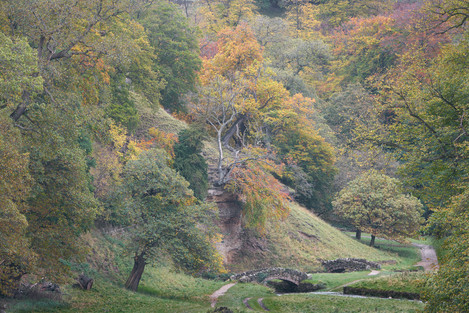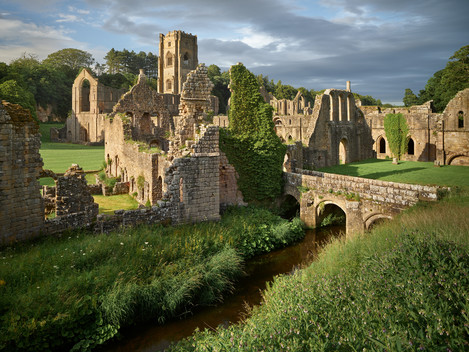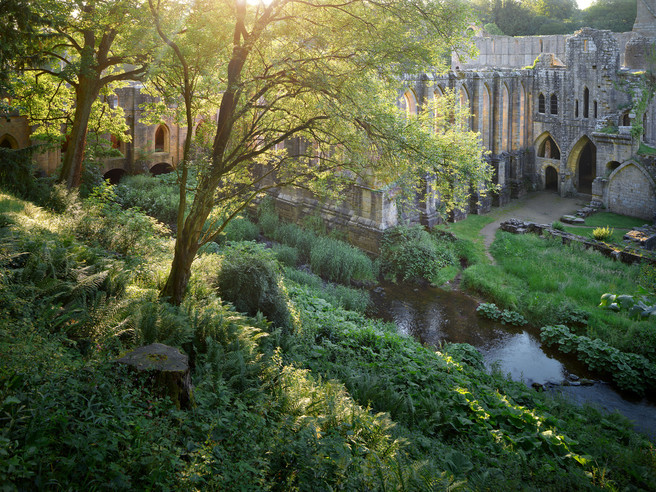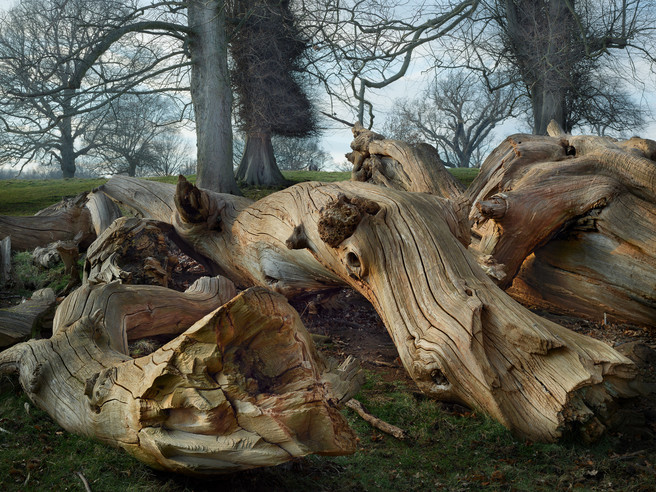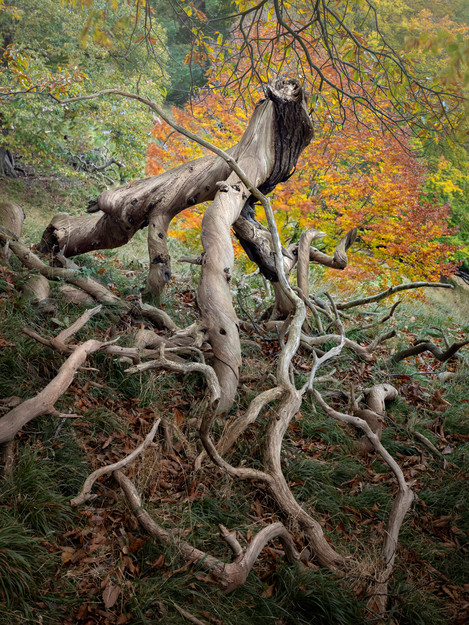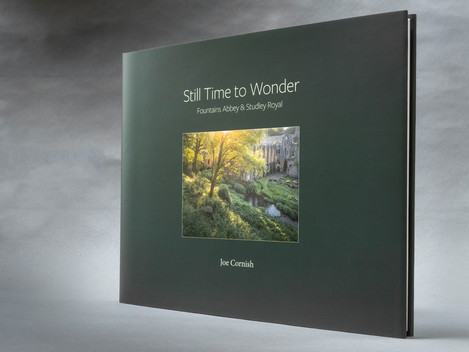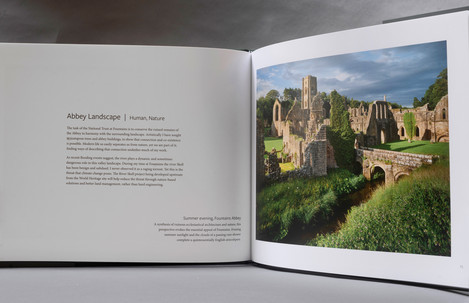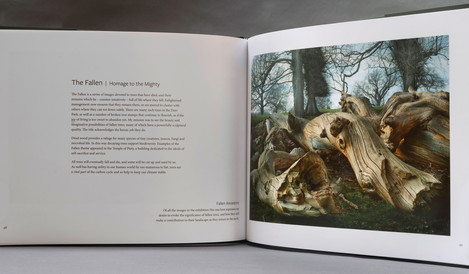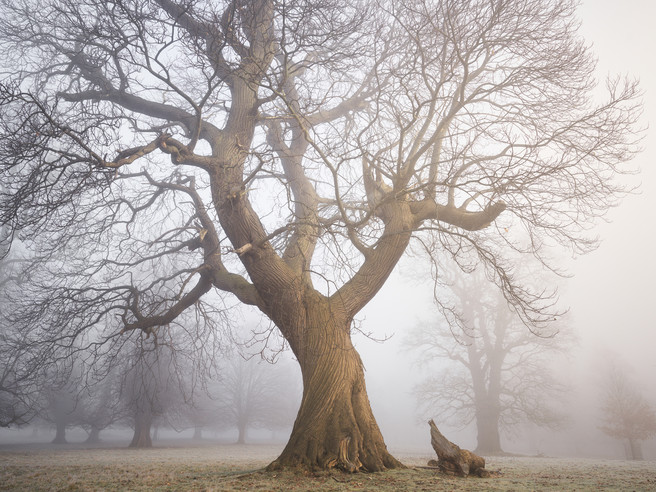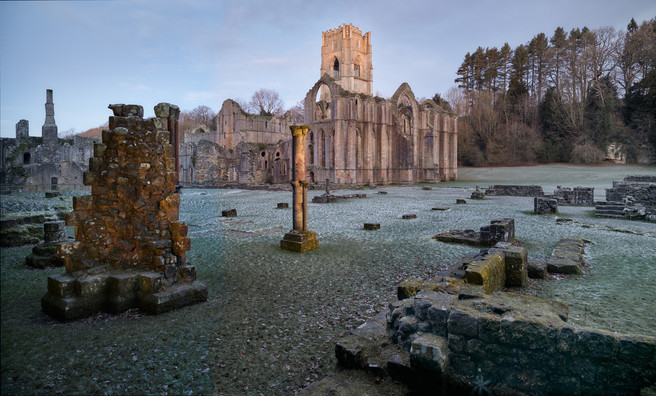A Book Review

Tim Parkin
Tim Parkin is a British landscape photographer, writer, and editor best known as the co-founder of On Landscape magazine, where he explores the art and practice of photographing the natural world. His work is thoughtful and carefully crafted, often focusing on subtle details and quiet moments in the landscape rather than dramatic vistas. Alongside his photography and writing, he co-founded the Natural Landscape Photography Awards, serves as a judge for other international competitions. Through all these projects, Parkin has become a respected and influential voice in contemporary landscape photography.
As Joe has already mentioned in his own overview of the Fountains Abbey project, it wasn’t really his favourite subject matter. In fact, as far as landscape goes, you couldn’t get much further away from his love of mountains and wild places. But a challenging job like this is just why you need someone like Joe Cornish to get the very best out of a landscape such as this.
This is, for me, why you can learn more from studying the work that Joe has done here than you can from a random collection of sublime landscape photographs. When the main tools that you have to work with are your compositional skills, knowledge of light and ability to create coherence in a body of work, those skills should be obvious in most of the photographs.
The book starts with a range of photographs of the abbey itself taken in a wide range of conditions. I see this as a context-setting introduction. The meat of the book starts with “Abbey Landscape” and a range of pictures that find viewpoints to show the built and natural landscapes balancing each other. There are a couple of pictures that I think are exquisitely constructed, which I’ll show below. They work together, almost like a cinematic ‘draw-back’, moving from the architectural images from before and slowly revealing the wider landscape.
Summer Evening shows the edges of the managed landscape so well, from the formal grounds of the nave and chapel leading via the great cloister to the infirmary bridge where the river banks overflow with reeds and grasses.
It’s the River Bank and Ruins photograph that really demonstrates Joe’s compositional skill and ability to find just the right place and moment.
Even without the Abbey, this photograph would have many of the makings of a classic. The strip of light on the ferns delineating the bank, the backlit trees, the cool blues of the river. But then we add in the warm and cool of the architecture, the play of light on the windows, the perfect positioning to frame the arched window between the trees. Every part of the picture working in close harmony.
This middle chapter continues these juxtapositions, offering the advantage to the man-made or natural as conditions fit.
You can almost feel the moment that Joe has submitted to his passion for the trees in the Abbey grounds. In the flip of a page, these sweet chestnut, beech, lime, horse chestnut and sycamore become the stars of the show and Joe is just the person to bring out their best features.
I’ll give you two of my favourite examples. The first is also Joe’s (I think) and shows part of the lifecycle of the trees. Joe found a way of showing this deadfall as organic forms, meshing with each other, almost moving together.
The second, which Joe has title Primate, is the remains of a fallen branch, bark stripped and showing twisting sinew-like fibres. The composition places the ‘head’ of the branch against a glow of chestnut colour.
The remainder of the book focuses on the features of many of these fallen trees, bringing out the spirit of the area through wounds and burrs.
The book works as both documentation of the Abbey site but also as introspection, a view of what Joe’s drivers are in his working practices and, as such, it makes really interesting browsing.
I asked Joe a couple of questions about the project
Obviously, Fountains Abbey and the surrounding land aren't instantly inspirational in the way that the mountains of the Scottish Highlands might be, but do you find the limits on natural beauty place more onus on the photographer and hence can be more satisfying when your contribution to a beautiful end picture is more significant?
Because, yes, the relatively “minor” scale of the Fountains landscape would not ordinarily inspire someone who loves wild places, mountains and dramatic shores. But really, that was a big part of the challenge and, therefore, enjoyment of it. I learned to tune in to the place, and that proved creatively to be a great experience.
The water garden and abbey buildings were more challenging as they have an ordered quality, and also they have been painted and photographed continuously for well over a hundred years… some of those earlier pictures are known to me, and inevitably that is an influence, even if the influence is: ”To avoid plagiarism I had better avoid that perspective, or composition”. I even had to avoid plagiarising my own previously made pictures from before the commission!
When I go now, I do so with an enormous sense of freedom, partly from the obligation of the commission but also because my familiarity with the place is such that I have an idea of what and where might be interesting in many different conditions of light and season, and so can organise my creative efforts accordingly.
Overall I have found the experience really positive and liberating. Fountains has become an ongoing creative place for me.
Were there any pictures that got away because the conditions weren't right, or you wanted to refine them more, or they didn't fit in the book?
There were certainly some ideas that I didn’t fulfil because with the best will in the world you can’t be there every day, and the conditions required for certain ideas is usually very specific. In particular, none of my visits coincided with a really convincing fog event, although I had a misty morning at How Hill that gave the image on page 7 opposite Justin Scully’s foreword. Some I was fond of that didn’t make it into the exhibition of course, if only because of limitations of space. A couple of these made it into the book.
Since the exhibition opened (and has now finally closed) I have re-started visits from time to time and some unfulfilled ideas are starting to appear. I’ll include two here. But in the end all images tend to appear unpredictably, which is a part of the joy of landscape photography (for me, anyway).
The Book
The book itself is hardback, cloth covered and very nicely printed on heavyweight paper (72 pages of 200gsm). Joe has said it is one of the best litho reproductions he has had. It includes a short foreword and introductory essay by Justin Scully (Site Manager) and Mark Newman (NT Historian). It also has two short essays from Joe about the project and the exhibition.
You can buy the book from the Joe Cornish Gallery for £30

